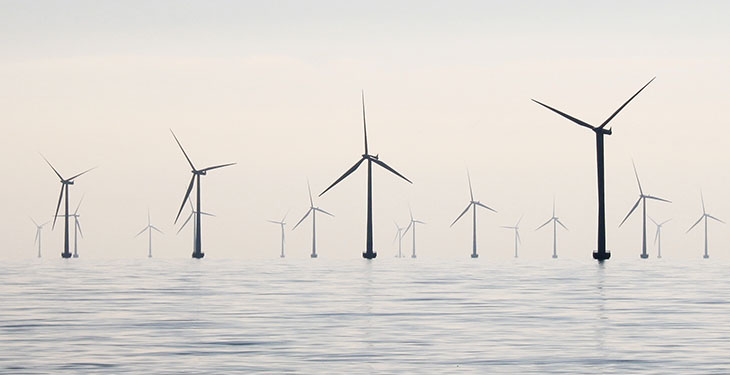Bogdan Tudorache
Despite COVID constraints, Europe confirmed a record amount of EUR 26.3bn of investments in new offshore wind farms in 2020, according to Wind Europe. This will finance 7.1 GW of new offshore wind which will be built in the coming years. Last year Europe built 2.9 GW of new offshore wind. Europe now has 25 GW of offshore wind capacity. The EU aims to have 300 GW by 2050.
The UK, Netherlands, Germany and France all saw final investment decisions for major new offshore wind farms.
“EUR 26 billion in new investments in 2020 is a huge vote of confidence in offshore wind. Investors see that offshore wind is cheap, reliable, and resilient – and that Governments want more of it. And these investments will create jobs and growth. Every new offshore wind turbine generates EUR 15m of economic activity. We expect the 77,000 people working in offshore wind today in Europe to be 200,000 by 2030”, says Giles Dickson, WindEurope CEO.
“The new installations show the resilience of the offshore wind industry. Europe’s existing offshore wind farms kept operating. We kept building new wind farms. We kept making new turbines”, says Giles Dickson.
Nine new offshore wind farms came online across five countries. The Netherlands connected 1,493 MW and completed the development of the Borssele Wind Farm Zone. Belgium connected 706 MW, the UK 483 MW and Germany 219 MW. Portugal completed the installation of a floating offshore farm, co-funded by the EU’s NER300 programme.
Europe now has 116 offshore wind farms across 12 countries. 40% of the capacity is in the UK. But new players are entering the scene. France will finally start building its offshore wind farms after final investment decisions on 1 GW which will be built by 2023. They’re also planning four small floating offshore wind farms and this year will tender a large floating offshore wind farm. Poland passed a historic Offshore Wind Act and aims for 28 GW of offshore wind by 2050. Additionally, they initiated an agreement among all eight Baltic countries to cooperate on offshore wind. Greece is about to adopt plans for the build-out of offshore wind. And the three Baltic States – Estonia, Latvia, and Lithuania – are all developing projects.
“Offshore wind is no longer just about the North Sea. It’s rapidly becoming a pan-European affair. More and more countries are making commitments on it. Poland, Spain, Greece, Ireland, the three Baltic States all have plans. And the rapid advance of floating offshore wind will help the build-out in the Atlantic, Mediterranean and Black Sea”, says Giles Dickson.
Offshore wind technology continues to evolve. The average size of the turbines installed last year was over 8 MW. 2020 saw big orders for GE’s 13 MW GE Haliade-X turbine. And Siemens Gamesa announced a new 14 MW turbine. New offshore wind farms now deliver capacity factors in excess of 50%.
The EU Offshore Renewable Energy Strategy (ORES) that the EU Commission tabled last year was a milestone. It mapped out the regulatory framework for the expansion of offshore wind development and set a target of 300 GW offshore wind for the EU by 2050, 25 times more than what the EU has today.
